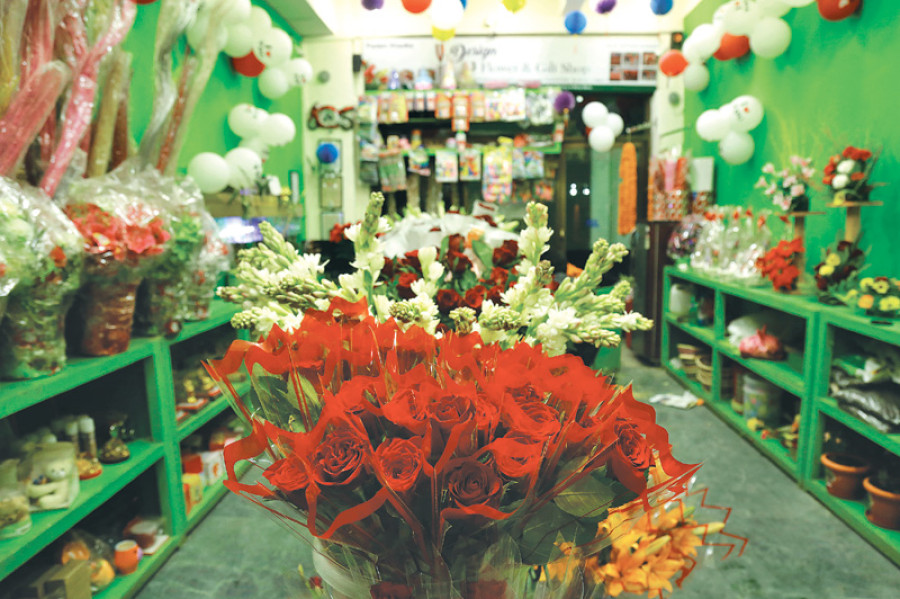Money
Flower shops brace for Valentine’s Day
Flower shops in the Kathmandu Valley have readied 150,000 rose sticks for the Valentine’s Day rush on Tuesday. Traders said the stock was 15 percent more than last year.
Sakchham Karki
Flower shops in the Kathmandu Valley have readied 150,000 rose sticks for the Valentine’s Day rush on Tuesday. Traders said the stock was 15 percent more than last year.
“Demand is growing because offering a rose on V-Day has become a fad. Nowadays, people from all age groups like to present a rose to their loved ones because of the transformation taking place in society,” said Kumar Shrestha, president of the Floriculture Association Nepal.
Although celebrating Valentine’s Day is not a Nepali tradition, many have started marking their calendars because of its widespread popularity. Over the years, many couples have started spending lavishly to celebrate the event, with the list of activities ranging from dining at fancy restaurants to partying. And the day generally begins with the presentation of a rose.
“I always give my girlfriend a bouquet of roses on Valentine’s Day. This is something that I do every year,” said Manish Shah, a teenager from Kaushaltar.
Thanks to a growing breed of customers like Shah, the Valley’s flower shops rack up Rs2 million worth of sales on V-Day alone.
“Valentine’s Week is one of the most important seasons for flower trading, especially rose. Roses sold on this day account for 15 percent of the total annual revenue generated from sales of roses,” Shrestha said.
More than half of the roses sold in the Valley on V-Day are grown in Nepal. Naikap in Kathmandu, Lalitpur, Bhaktapur, Dhading and Chitwan are the largest producers of roses. The rest are imported from India. Roses are currently grown on 5.5 hectares in Nepal. However, rose cultivation has been losing its charm over the years. Till 2010-11, Nepal used to grow roses on more than 14 hectares of land
“I remember those days when we used to export roses to England and Japan during Valentine season,” Shrestha said. “Since that time, many have stopped planting roses and other flowers because of labour problems and political instability.”
But rose cultivation is on a rebound, Shrestha added. “We have opened seven new rose farms in the Valley with 100,000 saplings to keep up with soaring demand.” Despite a drop in domestic output, prices have fallen 25 percent to Rs15 per stick this year, according to the Floriculture Association Nepal.




 8.12°C Kathmandu
8.12°C Kathmandu














